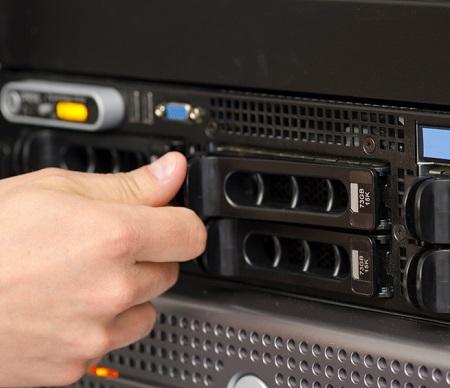Hyperconverged Infrastructure Is Now A Data Center Mainstay
A recent report from 451 Research finds that hyperconverged infrastructures no longer exist at the edge of the network. In fact, 40% of enterprises report that the technologies occupies the core of the data center.


8 Painful Vendor Mistakes IT Pros Make
8 Painful Vendor Mistakes IT Pros Make (Click image for larger view and slideshow.)
Hyperconverged infrastructure, where networking, compute, and storage are assembled in a commodity hardware box and virtualized together, is no longer the odd man out. Compared with converged infrastructure -- a hardware oriented combination of networking and compute -- hyperconverged brings three data center elements together in a virtualized environment.
Instead of a few converged units sitting at the edge of the corporate network, hyperconverged infrastructure has become part of the core data center infrastructure, according to 451Research's latest "Quarterly Voice of the Enterprise: Servers and Converged Infrastructure -- Organizational Dynamics."
Hyperconverged infrastructure "represents the next evolutionary step" for what passes as standard converged infrastructure, according to the report.
All major server and storage suppliers now produce hyperconverged units, but an early spin-off of EMC and VMware -- VCE -- was an early producer of what became known as Vblocks, which included Cisco servers and networking, along with EMC storage and VMware virtualization.
HPE, Dell Technologies, Nutanix, and IBM are now all producers as well.
Hyperconverged infrastructure at one time was criticized as overkill and as handing off too many configuration decisions to a single manufacturer. But IT managers and CIOs have abandoned that critique as more and more hyperconverged units are integrated into the data center with minimal configuration headaches and operational setbacks.
The 451 Research Voice of the Enterprise found that 40% of enterprises now use hyperconverged units as a standard building block in the data center, and analysts expect that number to climb rapidly over the next two years.
For that 40% of users: "74.4% of organizations currently using hyperconverged are using the solutions in their core or central datacenters, signaling this transition," according to the report.
Christian Perry, research manager at 451 and lead author of the report, wrote that "loyalties to traditional, standalone servers are diminishing in today's IT ecosystems as managers adopt innovative technologies that eliminate multiple pain points."
As a knowledgeable manufacturer innovates to produce process efficiencies in closely assembled and aligned storage, compute, and networking, both speed of installation and ease of operation lead to greater data center agility, he wrote in the Sept. 29 report.
Such an infrastructure change also leads to a change in the complexion of the IT staff.
For large enterprises of 10,000 employees or more, 41.3% reported that they were planning to change their IT staff makeup as a result of hyperconvergence. Over a third -- 35.5% -- of enterprises responded that they had added more virtual machine specialists due to the adoption converged systems.
According to the authors, "This is more than double the number of organizations actively adding specialists in hardware-specific areas" (such as server administrators or storage and network managers).
[Want to learn more about infrastructure trends? Read IT Infrastructure Trends: 5 Worth Watching.]
One area, however, remains surprisingly unchanged.
Containers have yet to make a major appearance in the infrastructure's makeup, and "remain nascent," in Perry's phrase, in data center management. Nearly 51% reported that none of their servers were running containers, while 22.3% told analysts that they are running containers on 10% or fewer of their x86 servers.
The 451 researchers don't expect those low percentages to last.
IT staffs will eventually take advantage of "their lightweight nature" to further adoption of the DevOps IT model and frequent software updates. But such an adoption will require personnel, perhaps the same virtualization managers, being added to staff at a high rate to manage the technology, the report noted.
VMware for one is attempting to include container management inside its more general, vSphere virtual machine management system.
The 451 research was conducted in July and August through a survey of 750 IT professionals worldwide.
About the Author(s)
You May Also Like
How to Amplify DevOps with DevSecOps
May 22, 2024Generative AI: Use Cases and Risks in 2024
May 29, 2024Smart Service Management
June 4, 2024







